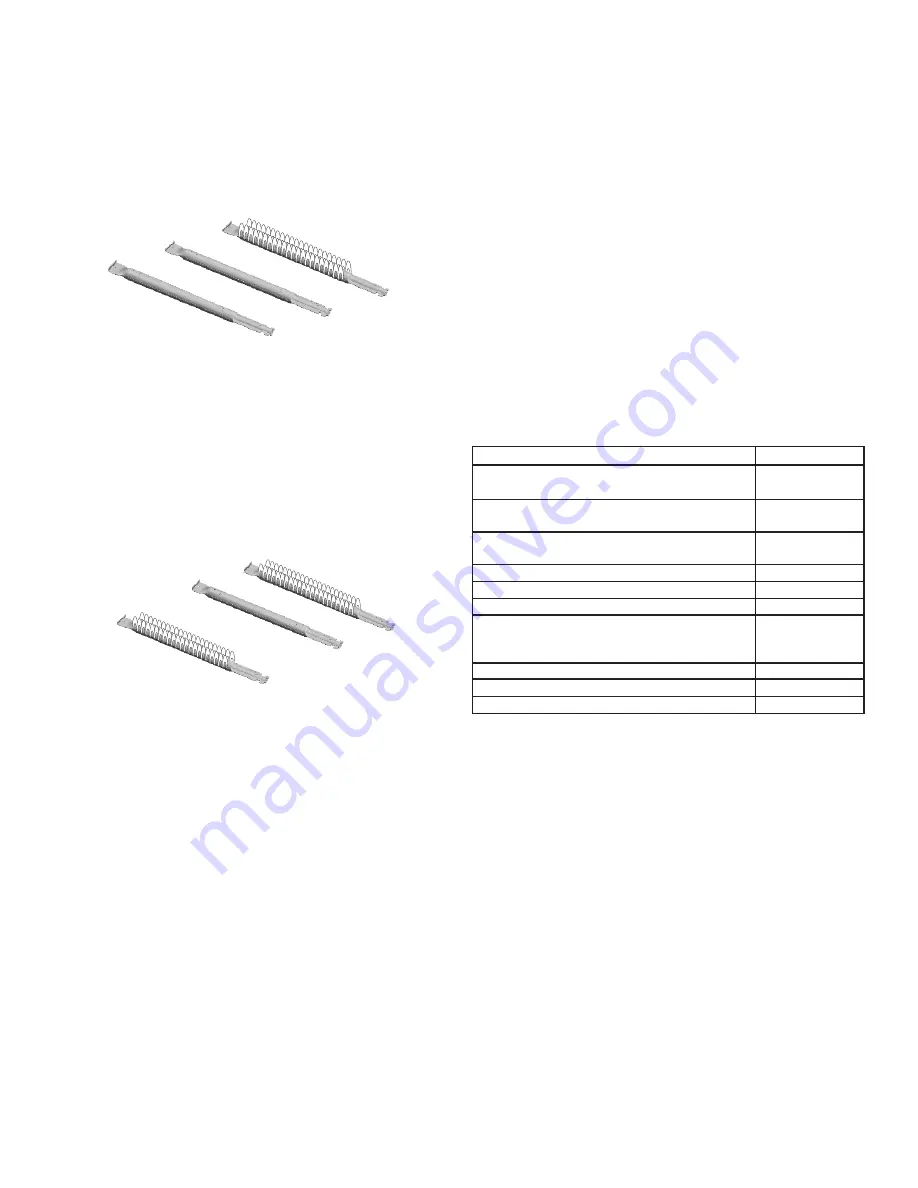
10 • 466220111
Food Safety
Food safety is a very important part of enjoying the
outdoor cooking experience. To keep food safe from
harmful bacteria, follow these four basic steps:
Clean:
Wash hands, utensils, and surfaces with hot soapy
water before and after handling raw meat and poultry.
Separate:
Separate raw meats and poultry from ready-to-
eat foods to avoid cross contamination. Use a clean
platter and utensils when removing cooked foods.
Cook:
Cook meat and poultry thoroughly to kill bacteria.
Use a thermometer to ensure proper internal food
temperatures.
Chill:
Refrigerate prepared foods and leftovers promptly.
How To Tell If Meat Is Grilled Thoroughly
• Meat and poultry cooked on a grill often browns very fast
on the outside. Use a meat thermometer to be sure food
has reached a safe internal temperature, and cut into
food to check for visual signs of doneness.
• Whole poultry should reach 165° F. Juices should run clear
and flesh should not be pink.
• Hamburgers made of any ground meat or poultry should
reach 160° F, and be brown in the middle with no pink
juices. Beef, veal and lamb steaks, roasts and chops can
be cooked to 145° F. All cuts of pork should reach 160° F.
• NEVER partially grill meat or poultry and finish cooking
later. Cook food completely to destroy harmful bacteria.
• When reheating takeout foods or fully cooked meats like
hot dogs, grill to 165° F, or until steaming hot.
Indirect Cooking
Poultry and large cuts of meat cook slowly to perfection on
the grill by indirect heat.
This method greatly reduces flare-ups when cooking extra
fatty cuts because there is no direct flame to ignite the fats
and juices that drip during cooking.
Place food over unlit burner(s); the
heat from lit burners circulates gently throughout the grill,
cooking meat or poultry without the touch of a direct flame.
1 Burner Cooking
Cook with direct or indirect heat.
Best for smaller meals or foods.
Consumes less fuel.
ON
OFF
OFF
2 Burner Cooking
Great indirect cooking on low.
Produces slow, even heating.
Ideal for slow roasting and baking.
ON
OFF
ON
Indirect Cooking Instructions
• Always cook with the lid closed.
• Due to weather conditions, cooking times may vary.
During cold and windy conditions the temperature setting
may need to be increased to insure sufficient cooking
temperatures.
• Place food over the unlit burner(s).
Recommendations of the Canadian Food Inspection Agency
Internal Cooking Temperatures
You can’t tell by looking. Use a digital food thermometer to
be sure!
Beef, veal and lamb
(pieces and whole cuts)
- medium-rare
Beef, veal and lamb
(pieces and whole cuts)
- medium
Beef, veal and lamb
(pieces and whole cuts)
- well done
Pork
(pieces and whole cuts)
Poultry
(e.g. chicken, turkey, duck) - pieces
Poultry
- whole
Ground meat and meat mixtures
(e.g.
burgers, sausages, meatballs, meatloaf,
casseroles) - beef, veal, lamb and pork
Ground meat and meat mixtures
- poultry
Egg dishes
Others
(hot dogs, stuffing and leftovers)
Food
Temperature
63°C (145°F)
71°C (160°F)
77°C (170°F
71°C (160°F)
74°C (165°F)
85°C (185°F)
71°C (160°F)
74°C (165°F)
74°C (165°F)
74°C (165°F)
The safe cook's guide to food thermometers
Food safety experts recommend using a food thermometer
that gives an actual temperature reading, not just a range.
Oven-safe thermometers stay in the food while it cooks. The
instant-read type is used when you think the food is done.
Read the manufacturer's instructions carefully!
For most
thermometers, simply insert it into the thickest part of the
food, away from fat, bone or gristle. Food is ready to eat
when it has reached the proper internal temperature. See
table.
Digital instant-read thermometers
read quickly. The
thermometer works well in both thin and thick food - just
insert it near the end of cooking time.
Digital instant-read thermometer-fork combinations
can
also be read quickly. The fork sensor needs to be fully
inserted into the thickest part of the food.
Dial oven-safe thermometers
are for thicker foods, like
roasts and casseroles, not for thin food. They can stay in the
food while it's cooking in the oven or barbecue.
Disposable temperature indicators
are for one-time use
with specific foods. Temperature-sensitive material changes
colour when the proper temperature is reached.











































